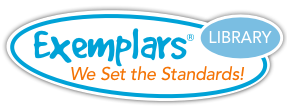Grade 3 - Multiplication Unit
The Multiplication Unit involves identifying a variety of models to represent the process of multiplication in order to learn how to use it to solve problems. Questions to answer may include:
- How do multiplication situations differ from addition situations?
- How do equal-sized groups model multiplication situations in the world outside the classroom? What real-world examples of equal-sized groups can you think of?
- How do arrays and area models represent multiplication situations in the world outside the classroom? What real-world examples of arrays can you think of?
- Given a multiplication equation, how can you create a situation to match it?
Math Concepts and Skills:
The student develops and uses strategies for multiplying whole numbers in order to solve problems.
The student:
- finds the total number of objects when equal-sized groups of objects are joined or arranged in arrays up to 10 by 10.
- represents multiplication facts using a variety of methods.
- uses a variety of strategies to multiply a two-digit number by a one-digit number. Strategies may include mental math, partial products, and the commutative, associative, and distributive properties.
Summative Assessment Task
Students determine the solution to 6 x 3 and draw a representation of their findings using circles and stars.
Instructional Tasks/Formative Assessments
Students determine if Amy will get the same total of pom-poms whether she buys packages of four pompoms or packages of seven pompoms.
Students create a story problem to match the equation 6 x 4 and determine the solution.
Using given information, students determine a math story and its solution.
Students determine if a problem matches 6 x 5.
